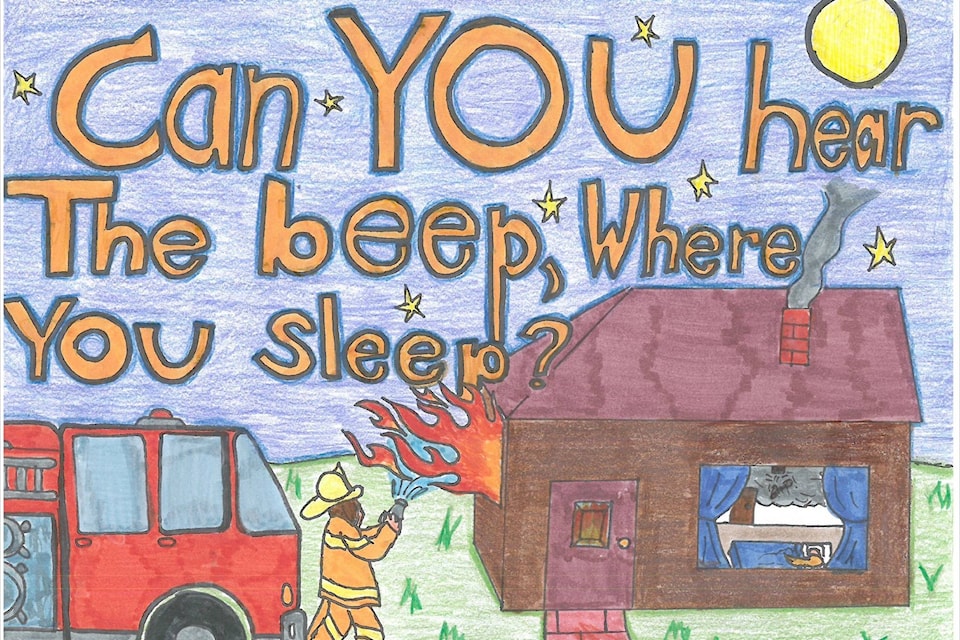The BC Professional Fire Fighters’ Burn Fund’s 21st Annual Burn Awareness Week (BAW) program runs Feb. 4 to 10, 2018.
Burn Awareness Week teaches kids to be responsible for their own safety and helps make their families aware of potentially harmful situations. All Burn Awareness Week resources and curriculum are available online at burnfund.org.
To encourage student participation, the Burn Fund runs the annual Burn Awareness Week Poster Contest. Every entrant receives a participation prize and fifty students will win money for their elementary school or BC Ministry of Education sanctioned distance education facility.
There are seven regional prizes, including a $1,000 Grand prize and six $500 Regional prizes. Regions are the Lower Mainland (three winners), Vancouver Island, Kootenay, Northern BC and the Okanagan (one winner for each area). Forty-three students win runner-up prizes of $50 each for their school or distance education facility. Complete prize details, rules and regulations are available online.
Burn awareness week program
Public and private elementary schools in British Columbia, parents, students — anyone — can access the program online, which includes burn awareness safety tip information, student activity sheets, quizzes, colouring pages, and animated videos. The program is available in PDF format for easy download and printing.
Educational, fun and interactive, the program includes age-appropriate safety lessons intended for K/Grade 1; Grade 2/3; Grade 4/5; and Grade 6/7.
The burn hazard
A majority of Canadian parents aren’t aware of the scald and burn hazards in their homes. A survey by Safe Kids Canada found that 70 per cent of Canadian parents did not know that the most common cause of burn injuries to children is scalds from hot liquids, such as spilled hot drinks and hot tap water, rather than fire.
“Most adults realize that children need to be kept safe from fire or hot objects like the stove, but they do not realize that hot liquids are just as dangerous,” says Jason Milne, Burn Fund Director and Chair of the Burn Awareness Week Program. “Hot liquids burn just like fire.”
Each year an estimated 9,000 children in Canada visit hospital emergency room for burns, and almost half of these have suffered scalds from hot liquids. Close to 1,000 Canadian children are hospitalized each year for severe scalds and burns. Approximately 50 per cent of these children are hospitalized for scalds alone. (Source: Safe Kids Canada)
The most common sources of burns to young children are scalds from hot drinks and hot tap water.
Scalds from hot tap water are often the most severe. Contact burns from ovens and gas fireplaces are also frequently seen in young children. Children’s skin is thinner and more sensitive. A child’s skin burns four times more quickly and more deeply than an adult’s skin at the same temperature.
Most home hot water heaters in Canada are set at 60° Celsius (140° Fahrenheit). At this temperature, a child’s skin can burn in just one second.
